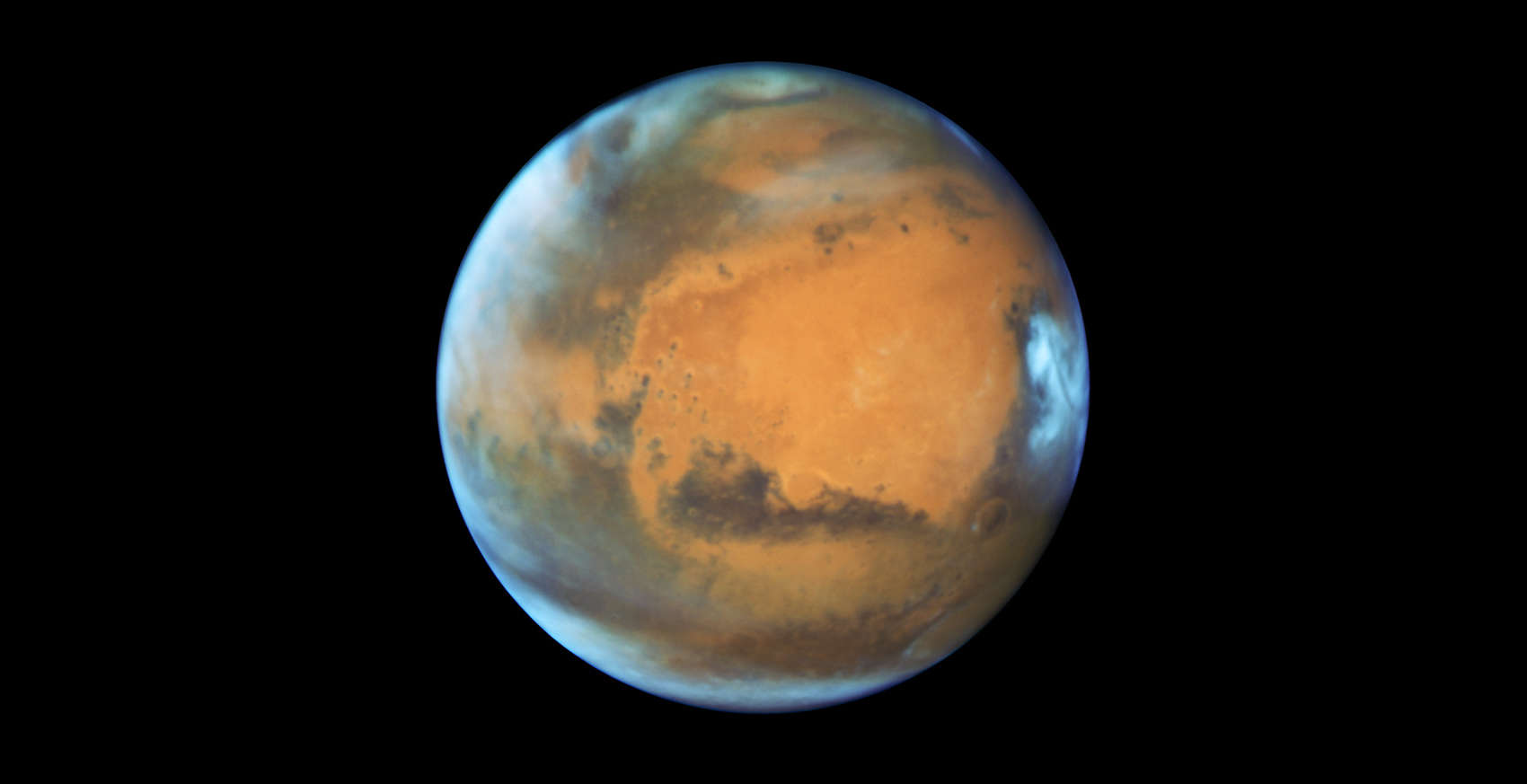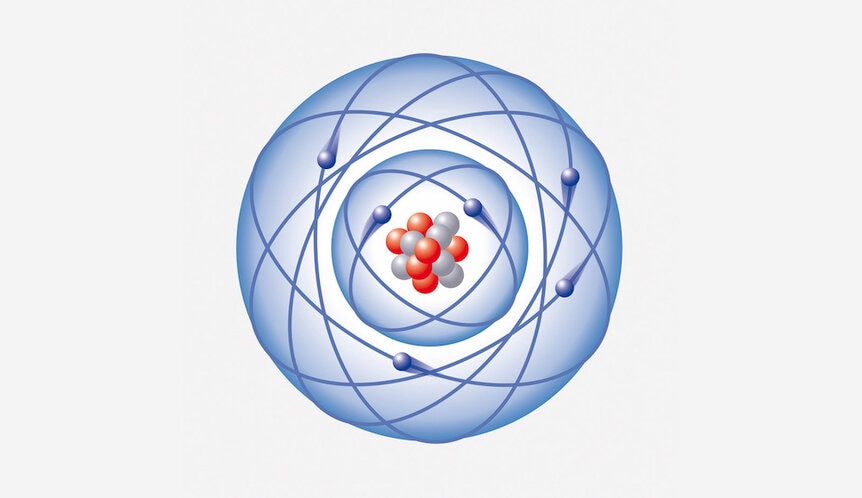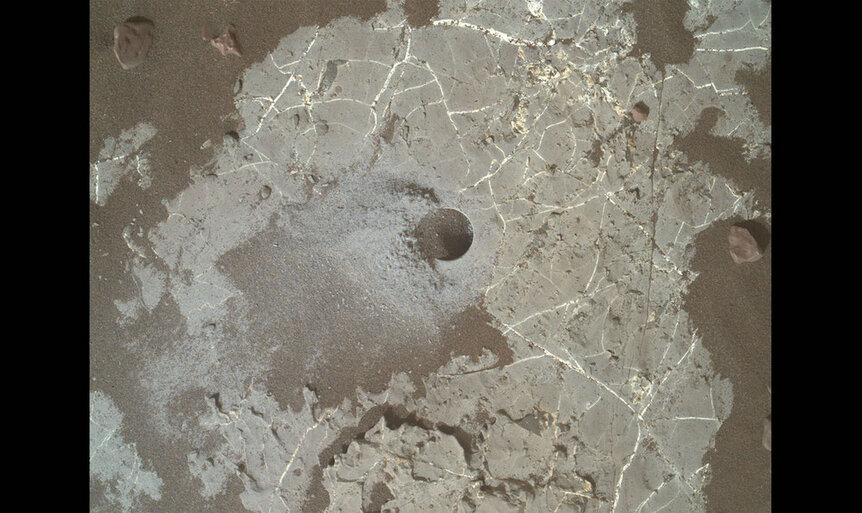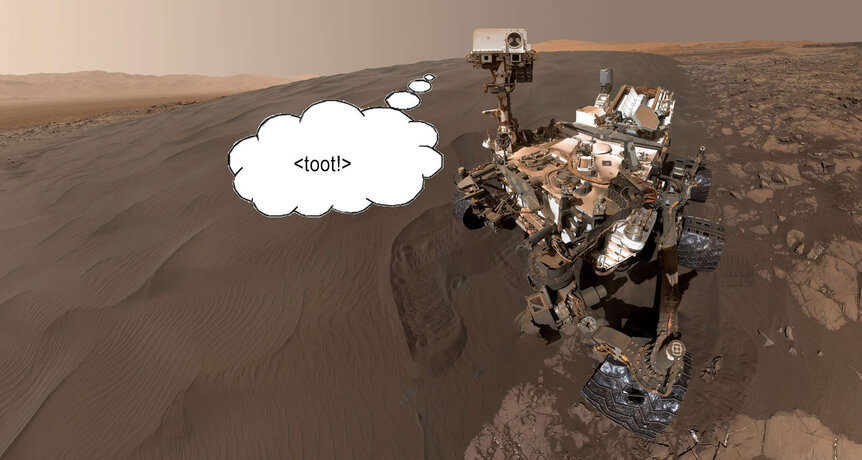Create a free profile to get unlimited access to exclusive videos, sweepstakes, and more!
Martian mystery: Why is an isotope of carbon depleted on the surface of Mars?
Biology, geology, or astronomy... which one depletes carbon-13 on Mars?

The NASA rover Curiosity has been tooling around Mars for nearly a decade now, over 3,300 Martian days. It's been examining the environment of Gale Crater, an enormous impact feature over 150 kilometers wide. Billions of years ago Gale was likely a lake of water, and it was chosen as a landing site specifically for Curiosity to examine conditions there and see if they could have once supported life.
It's not looking for little green Martian critters directly, but it's come up with something of a mystery. One possible — possible — solution is life, but don't jump the gun. It's still possible that abiotic (non-biological) processes are responsible for the anomaly.
Curiosity has a drill on board that allows it to burrow into rocks on the surface, and the samples can then be analyzed using a mass spectrometer, a device that can determine the abundances of various chemicals in the sample. For example it can look at how much carbon dioxide, methane, carbon monoxide, and other molecules are present relative to each other.
It can also look at isotopes of some elements as well. A single element, like carbon, is defined by having six protons in the nucleus of its atoms. If it has 6 neutrons as well then it's called carbon-12 (abbreviated 12C). If it has 7 neutrons it's carbon-13 (13C). These different isotopes of carbon can tell you different things about the origin and evolution over time of a sample, because they have slightly different properties.
For example, the Martian atmosphere has a ratio of 12C to 13C of about 78 to 1. That's actually a little lower than the natural ratio of those isotopes elsewhere. Why? 12C is lighter than 13C (by the weight of one neutron). Some processes in the Martian atmosphere give these atoms energy, and for the same amount of energy a 12C atom will get a higher velocity than 13C because it's lighter. At the top of the atmosphere that means 12C is more easily lost to space, increasing the ratio of 13C to 12C.
Here's where the weirdness comes in (link to paper). Curiosity has taken 30 different samples at five different spots on the Martian surface inside Gale Crater, and the ratio of 13C to 12C varies wildly from place to place. But in nearly all cases that ratio is lower than it is in the atmosphere.
In other words, some process on Mars is either lowering the amount of 13C or enhancing the amount of 12C.
The scientists who made this study offer three plausible mechanisms to do this. One is that ultraviolet light from the Sun can split apart carbon dioxide molecules in the Martian upper atmosphere into carbon monoxide and an oxygen atom, which then recombine with other molecules to form more complex carbon-based molecules. These processes can very slightly favor the lighter-weight 12C atoms, so when these molecules fall to the surface they become incorporated into the rock, enhancing the amount of 12C relative to 13C.
Another possibility — and I like this one, for obvious reasons — is that every now and again, roughly every 100 million years or so on average, the Sun plows through a cloud of interstellar gas and dust, called a giant molecular cloud. Interstellar dust falls on Earth all the time, but during one of these cloud traversals that number could increase up to 100 times! It's still a tiny amount in total, but as it happens these clouds have more 12C in them than 13C compared to what we see on Mars. So if this dust rained down to the surface, it again would enhance 12C at the expense of the 13C ratio.
The third possibility is the most exciting, but to be very clear it's not at all proven. Like the others, it's just an idea: Biology. Ancient Martian bacteria could have produced methane biologically. If that life was like Earthly bacteria, that methane would preferentially have the 12C atom in it. The methane would then rise up in the air, get zapped by solar ultraviolet, and rain down as in the example above, becoming incorporated into rocks and raising the amount of 12C versus 13C in them. I'll note that weird plumes of methane have been detected on Mars, but an explanation for them — geologic or biologic — has yet to be found.
So which is it? Weird chemistry, weird collisions with giant dust clouds, or weird belching Martian bacteria?
Yeah, so that's the issue. It's not possible to tell which one is the best answer, just that they're all plausible. The scientists in the study are very careful to make that point, perhaps knowing that a lot of folks in the media will run away with the eructating bacteria idea.
It's worth noting that none of these processes works well on Earth, so whichever one it is, it's weird. Well, compared to what we're used to. But part of studying Mars is trying to figure out how it's different, and how those processes play out.
The real bummer is that as of right now the evidence is very iffy. It's possible that more samples analyzed by Curiosity can help. Also, the Perseverance rover is a few thousand kilometers from Curiosity in the crater Jezero, and it's not only looking for evidence to see if life was supported there eons ago, but it's also looking for life itself, fossilized or otherwise. Even if it doesn't find any, the samples it's analyzing could help break the stalemate.
Until then, the Mystery of the Martian Carbon Isotope Ratios will continue.
Mars, it turns out, is an interesting place. But it doesn't divulge its secrets easily. Hopefully, with Curiosity and Perseverance, we may just get our answers.

















